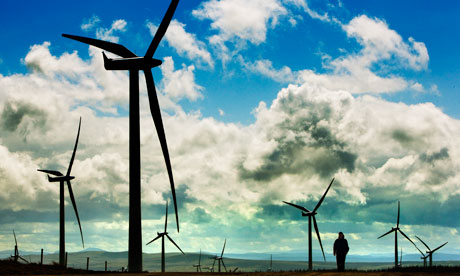The appetite among communities for owning and generating their own electricity is growing. A new study by ResPublica has revealed that community energy capacity has increased by over 1,300% to nearly 60MW over the past decade.
By 2020, we estimate that the sector will grow nine-fold to 550MW. But its capacity could be much greater with leadership and investment from local authorities. With the right national policy framework, the sector is capable of delivering almost a fifth of total renewable energy capacity by 2020 – equivalent to 5.27GW.
Policy-makers and practitioners have increasingly been asking how community energy can grow. It is clear that future developments will have to be built to a larger scale, and indeed this reflects recent trends.
One way to achieve such scale is for ambitious communities to go it alone. The UK boasts two wholly community-owned projects: the Lochcarnan community windfarm at Stora Uibhust and the Westmill wind farm co-operative in Oxfordshire.
The Westmill wind farm co-operative produces electricity for the equivalent of 2,500 homes, saving carbon emissions of at least 5,000 tonnes of carbon dioxide a year.
These community-led initiatives are tremendous achievements, particularly considering that volunteers typically carry out much of the hard work.
However, in many cases community-led development is unfeasible. As outlined in our paper, not all communities have access to the needed legal, financial, technical and project management expertise to develop projects on their own.
A key to achieving significant growth in the future is joint ownership, where communities are able to partner with private developers, local authorities or businesses. Without support for this model, growth of the sector will almost certainly stall.
Where time or expertise is missing, much of the gap could be met by commercial developers themselves, working in partnership with communities.
UK renewable energy partnerships involving communities remain relatively rare. Nevertheless, community equity held in several projects already accounts for a surprising share of total community renewables capacity, with 20.6MW of community owned projects being owned jointly with commercial developers, through shares in projects of under 50MW.
When completed, the very sizable 370MW Viking windfarm, 45% of which is owned on behalf of the community by the Shetland Charitable Trust, will be the third largest onshore windfarm in Scotland.
The appetite for partnership is clearly there. It is the success of these large joint ownership projects that have not been considered in previous estimates of UK community renewable capacity, and which could provide further impetus for communities to partner with developers and deliver projects at scale.
There remains ample room for innovation in the UK joint venture space, and we foresee that much of the future growth of the UK renewables sector will be realised in conjunction with private sector stakeholders. But this requires support from local and national government, which is why we recommend that the planning process for communities must be streamlined, fast-tracked and standardised. We also urge developers, local authorities and businesses to approach communities, and vice-versa, to proactively forge such partnerships and for a national portal to be established to make such matchmaking easier.
Most of all, the government must ensure that the community energy is treated as integral to the market. At ResPublica's event in parliament yesterday, the minister for energy and climate change, Greg Barker MP, said that we need to move from the "big six" energy suppliers to the "big 60,000" which would include independent community energy providers that can broaden out the market.
For this, incentives at a national level and leadership from councils at a local level are key to catalysing the level of growth and diversification that our energy market needs.


 Log in with Facebook
Log in with Facebook 





